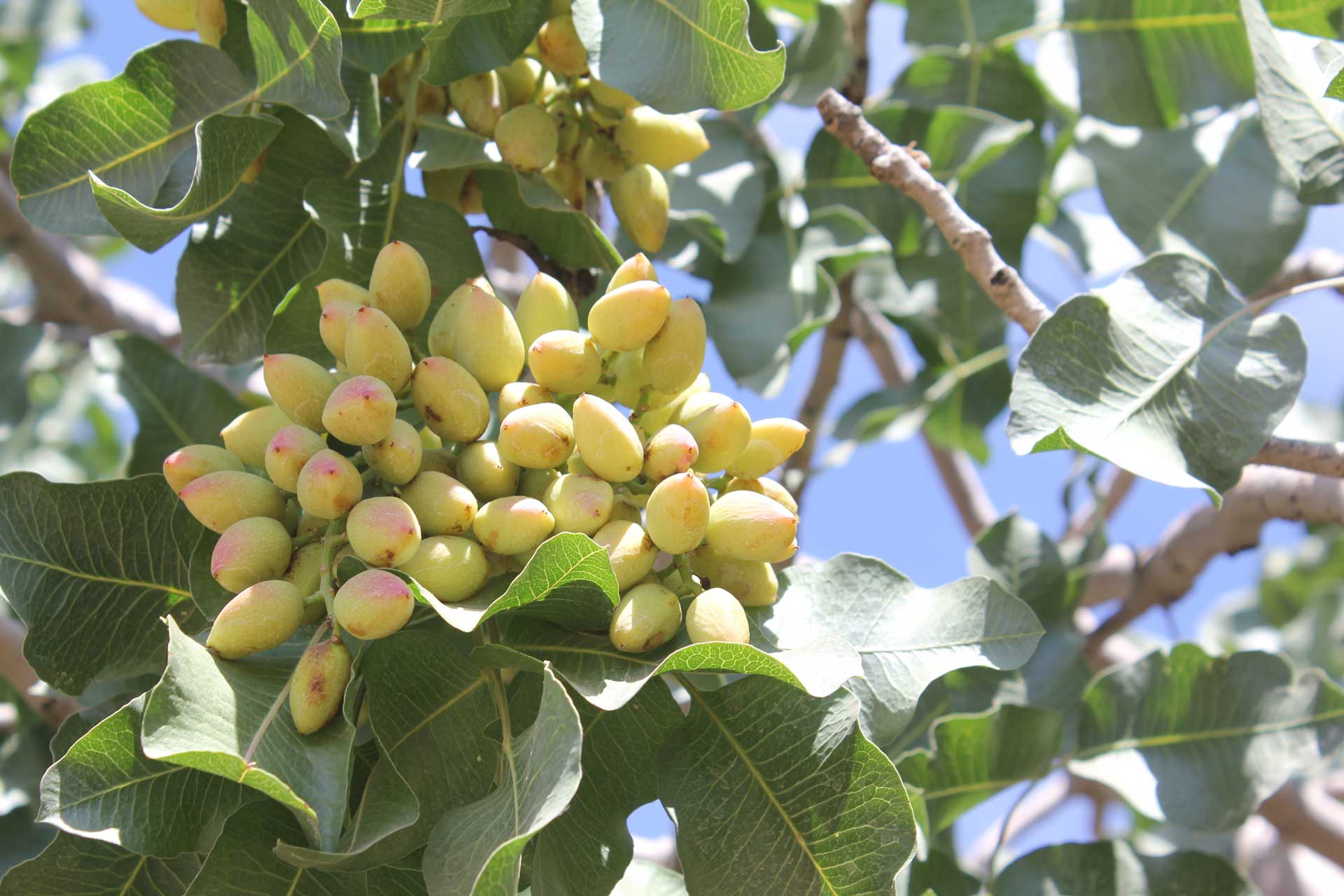
Pistachio trees have long been known for their ability to withstand tough environmental conditions.
How they adapt to environmental stress and what that means for commercial yields was discussed by UCCE Orchard Systems Specialist Giulia Marino in a 2021 Pistachio Day presentation.
When there is a change in the environmental conditions in an orchard, Marino noted, there is a physiological adaptation. The changes impacting a tree’s health can include a reduction in the chill hours during dormancy, elevated soil or water salinity, extreme heat or waterlogging. A tree’s response may impact its productivity.
“Plants have strategies to manage stress,” Marino said.
“There is never just one environmental stress, they interact and affect pistachio physiology.”
Pistachio trees have dual behavior in regard to water use. They are a drought-tolerant species with elevated water consumption. As water stress intensifies, leaf water use is reduced.
Marino compared pistachio orchards in Sicily where trees received four inches of water with San Joaquin Valley orchard systems where 40 inches of applied water is common. Yields in the San Joaquin Valley are much higher, Marino noted, but the water productivity for the crop in Sicily is much higher.
Efficient management of water uses the least amount to achieve the highest amount of production.
More research is needed, Marino said, to develop continuous, precise plant-based monitoring for water use. Adaptation of irrigation scheduling for alternate bearing and cultivar-specific water use is also needed.
Pistachio tree adaptation to saline conditions is more complex. Saline conditions have an osmotic effect on water uptake and an ion-specific effect on leaves. Energy expended to pull in water reduces the amount available for growth. Soil can also become degraded due to high salt levels.
Management includes using tolerant rootstocks and cultivars, winter leaching and soil amendments.
Growers also need information on growth prediction and planting strategies, NPK and pest management in saline conditions.
Impacts of waterlogging on an orchard are similar to drought, but less reversible. They include decay of root systems, leaching of nutrients and interruption of carbohydrate transport.
Temperature effects depend on the time of year. Ideal conditions are heat in the summer, early fall and spring and cold during winter dormancy. Cold temperatures during the spring can impact new growth. Warm temperatures during winter dormancy can cause erratic bloom and uneven maturity of nuts.

Cecilia Parsons
Cecilia Parsons has lived in the Central Valley community of Ducor since 1976, covering agriculture for numerous agricultural publications over the years. She has found and nurtured many wonderful and helpful contacts in the ag community, including the UCCE advisors, allowing for news coverage that focuses on the basics of food production.
She is always on the search for new ag topics that can help growers and processors in the San Joaquin Valley improve their bottom line.
In her free time, Cecilia rides her horse, Holly in ranch versatility shows and raises registered Shetland sheep which she exhibits at county and state fairs during the summer.















